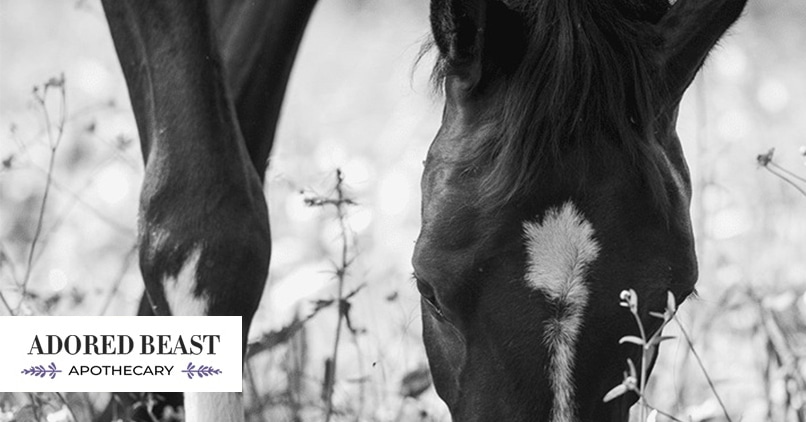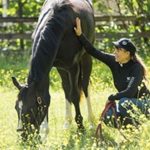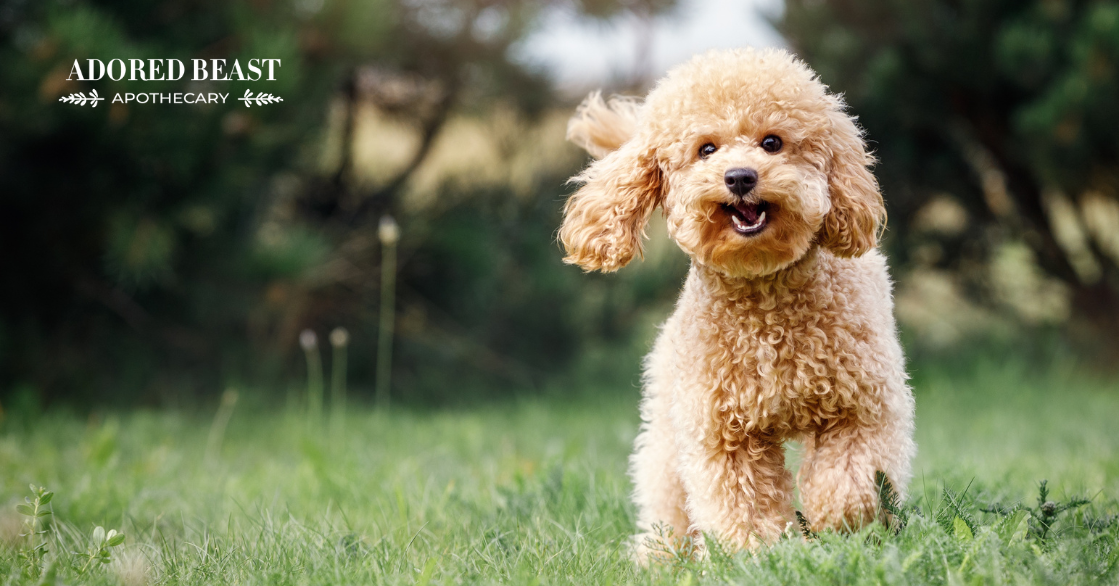Our modern world has taken horses from being essential modes of transportation to the non-essential worlds of sport and pleasure. They have fought in wars for us. They provide therapy to countless mentally and physically challenged people. They have competed with us for no personal gain but because we ask. We used to depend so greatly on them but now, they depend on us.
Many horses live largely in a stall and in a small paddock. They don’t have access to field turnout or even a large enough space to encourage adequate movement. When it comes to equine health, movement is key for injury prevention, gut health and equine mental health. For some of us, it’s simply a matter of lack of field space where our horses live. For others, it might be that you’re afraid that your horse will injure themselves if given too much space. I’ll cover these concerns below so you can make educated choices about how to give your horse access to more space and foraging time in a safe and realistic manner.
The Benefits of Pasture Turnout for Equine Health
1. Turnout improves your horse’s nutrition
Grass is so nutritious that it requires your horse to eat 1 to 1.5% of its bodyweight in grass compared to 2-2.5% extruded feed. (1) Grass also contains the precursors for many antioxidants (including vitamin A and E) and omega 3 fatty acid production in the body. That’s why grass fed meats are higher in omega 3’s and antioxidants than grain fed ones. (2) Field time also gives them access to nutrient-rich herbs such as dandelion leaf and root. Learn more in our upcoming blogs about the Nutritional Differences Between Hay and Grass and Why You Should Stop Killing Your Dandelions.
2. Turnout contributes to healthy bones, joints and ligaments
A study of young thoroughbreds that were turned out 7-17 hours per day showed 20-25% better aerobic capacity than horses the same age with no field time. (3) Another study showed that foals that get regular field turnout increased the physical and chemical integrity of the joint cartilage. (4) So, it follows to say that early age turnout can greatly benefit your horse for the rest of its adult life. It can also help to prevent and manage arthritis in adult horses. (5)
3. Turnout can reduce stress-related behaviour
Equine stress can manifest in a number of ways from physical illness to unwanted/strange behaviours including wood chewing, weaving, cribbing, spooking/bolting/rearing/bucking under saddle, and more. Wood chewing is a clear sign of the urge to graze. There is evidence to show that cribbing behaviour is reduced by promoting foraging behaviours. (6) (7) Other studies show that horses given access to multiple foraging sources significantly changed their feeding behaviour, indicating that multiple forage sources kept horses more mentally occupied than eating the same forage day in and day out. (8) (9) In essence, foraging behaviour is a natural calming mechanism for horses.
4. Turnout helps prevent development of colic and gastric ulcers
With regard to equine health, intestinal motility is paramount for colic prevention. Gut motility is significantly reduced in stabled horses compared to pasture-kept horses. (10) Gastric ulcers are another common issue for stabled horses. In Europe, studies have shown that grass pasture and limited to no access to grain is the ideal scenario for horses with history of gastric ulcers. (11) Again, the more movement and forage options your horse has access to, the better, especially if you’ve run into either one of these issues with your horse.
5. Turnout can improve your horse’s work ethic
When horses are allowed to have access to a natural area to freely express themselves, it can change their work ethic during training sessions. A study from the University of Goettingen in Germany revealed that horses given access to turnout showed more willingness to work during training sessions and that horses with no turnout access showed a less willing attitude to work. (12) This is an important factor in keeping you safe in the saddle as well so your horse does not feel the need to act out their natural behaviours of play while you are riding them!
MYTH: Turnout does NOT increase insulin resistance or cause metabolic syndrome.
It is generally agreed upon in the scientific community that exercise has the effect of modifying metabolic pathways in all manner of mammalian species. Some horse owners believe that putting an insulin resistant horse on grass could be a death sentence by increasing the sugar in the diet. This not necessarily true. Studies show that field turn out even on high yielding pasture does not increase insulin resistance or risk of metabolic disease. Increased access to movement and grass fibre actually stabilizes blood glucose rather than dysregulating it. Obesity seems to be the main risk of these diseases which also increases risk of laminitis.(13) Obesity related to unnatural stabling, lack of movement, unreliable/intermittent access to rich pasture, and unnatural extruded feed might be bigger culprits than regular pasture grazing….
Tips for Safe Pasture Turnout
Some horse owners are afraid their horses will be injured if they turn them out in a field. This is relative to what your horse is used to. If your horse is living in a small space with little access to movement on a regular basis, your horses’ ligaments may not be as strong as a horse that is regularly moving around. They might also be physically and mentally pent up so when given access to more space, they might decide to take a running, bucking leap of joy. This is where the potential for injury can arise so it’s important to ensure that you introduce the pasture area to them in a safe and logical way.
Once horses have regular access to a field, the urge to go bananas reduces and they settle into their new routine. The biggest risk of injury is greatest at the beginning of introducing a stable-kept horse to a wide open space that they aren’t used to. Here are some tips for safely introducing your horse to the field:
- Hand walk your horse, hand graze them and introduce several hay piles into their current paddock area several weeks before starting the turnout introduction. This will increase their mobility as they move from pile to pile and will help them strengthen their joints and tendons before turning them out into a larger area. Hand grazing will give them short feedings on grass to get them used to the new food source.
- Start by introducing a space that is 50% larger than the one your horse currently has access to. If they are only used to a small paddock, give them access to a larger one but not a space where they could really get going. The easiest way to do this is to use temporary fence panels to make a smaller pasture space, separate from your large field. Then, slowly increase the size by adding more panels until the novelty of large spaces wears off and they settle into the turnout routine. This will also help them navigate their bodies in a larger area and condition the joints and ligaments before going into a big field, reducing injury risk.
- Use leg boots and bell boots on your horse in early stages of introducing larger spaces to protect the legs from injury and from your horse throwing a shoe.
- Don’t turn horses out in wet fields, especially if they are not used to being turned out. Wait until there is warmer/dryer weather to introduce field turnout to reduce risk of injury from slipping on wet footing.
- Introduce horses new to field turnout with seasoned pros. Horses are herd animals and will naturally follow the lead of other horses. Turning a horse that isn’t used to field life into a herd with horses who are field veterans is a great way to set a good example. Start by turning your “newbie” horse next to the herd in a smaller area so they can meet over the fence first. Then once everyone gets to know each other, move the new horse into the herd. Remove back shoes before the introduction to avoid kicking injuries during the transition.
- Introduce your horse to pasture grazing for only short periods at first and slowly increase grazing time. Just like adding any other new food or supplement, giving your horse free access to grass if they aren’t used to it could cause digestive distress so start with 30 minutes of daily grazing time and gradually increase the time they have access to it over several weeks. Handgrazing is a great way to start the process.
If Your Just Don’t Have Adequate Field Access
For some, it may be near impossible to find a suitable place to train while giving your horse access to field turnout. If you just don’t have access to a field, whatever the reason, here are some tips for how to enrich your horse and help them stay in good mental and physical condition.
- Free lunge your horse. Free lunge your horse either in an arena or a round pen. Use the latter first if your horse tends to go bonkers in the arena. It’s often a welcome change to the everyday monotony of arena training and paddock life. It gives them a change to blow off some steam in an area with good footing. Additionally, free lunging can help you to bond with your horse. This will also improve your relationship when you’re in the saddle.
- Hand graze your horse. If you don’t have access to a fenced field, find an area to hand graze your horse. Hand grazing provides fresh food to your horse, mental stimulation and quality time with you.
- Create a variety of feeding areas for your horse. If you can provide several locations for your horses’ hay, this will give them something to do and promotes movement. Better yet, provide your horse with a few different types of hay so they can have choices about what they eat first and when. Selective foraging is another mentally stimulating behaviour that relieves boredom. Feeding toys and slow feeders are other ways to provide entertainment.
- Hand walk your horse as much as you can. This promotes gut health and strengthens the joints and ligaments.
- Provide a variety of training exercises. Don’t always do ring work in your desired discipline! Go trail riding. Have stretchy, long rein walk sessions. Do trot pole sessions. Do hill work. Ride in an open field instead of the arena. If you ride dressage, change it up by going over a few small cross rails. If you’re a jumper, do some flatwork. Horses are much more willing to participate when things are interesting. When you can’t provide turnout, enrich your horses’ life with a wide range of physical and mental activities to keep them stimulated. Cross training is also a great way to increase your horses’ fitness and protect their soundness.
We hope this gives you some knowledge and inspiration to help enrich your horses’ life so they can be free to naturally express themselves as much as possible for health, soundness and longevity.
References:
- The Horse: Pasture Grass: The Healthy Choice by Dr. Ray Geor BVSc, PhD, Dipl. ACVIM
- The Nutrition Journal: A review of fatty acid profiles and antioxidant content in grass-fed and grain-fed beef
- Equine Veterinary Journal: Digestible energy expenditure in grazing activity of growing horses
- Equine Veterinary Journal: Functional adaptation of equine articular cartilage: the formation of regional biochemical characteristic up to age one year
- The Veterinary Clinics Equine Practice: Managing Chronic Arthritis
- Applied Animal Behaviour Science: Effects of Environmental factors on cribbing activity by horses
- Veterinary Medicine International: Efficacy of a feed dispenser for horses in decreasing cribbing behaviour
- Equine Veterinary Journal: Foraging enrichment for stabled horses effects on behaviour and selection
- Applied Animal Behaviour Science: Foraging enrichment for individually housed horses: practicality and effects on behaviour
- Equine Veterinary Journal: Investigation of the effect of pasture and stable management on large intestinal motility in the horse, measured using transcutaneous ultrasonography
- European College of Equine Internal Medicine Consensus Statement – Equine Gastric Ulcer Syndrome in Adult Horses
- The Horse: Turnout’s effect on stall-kept equine athletes
- Department of Equine and Small Animal Medicine, University of Helsinki, Finland: Relationships among body condition, insulin resistance and subcutaneous adipose tissue gene expression during the grazing season in mares












